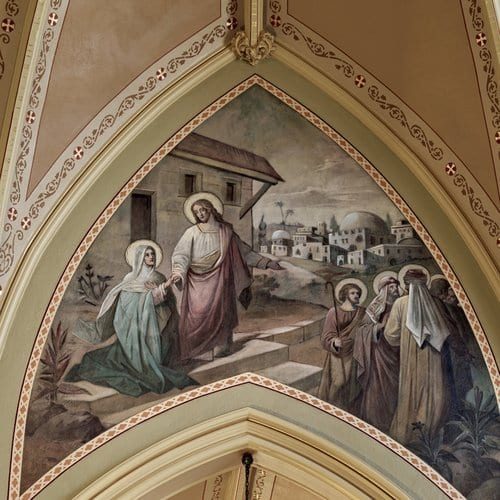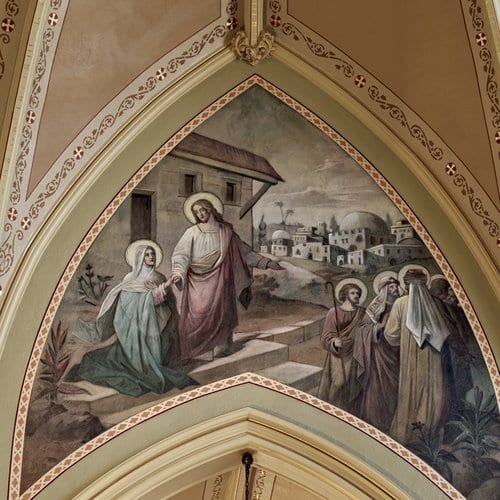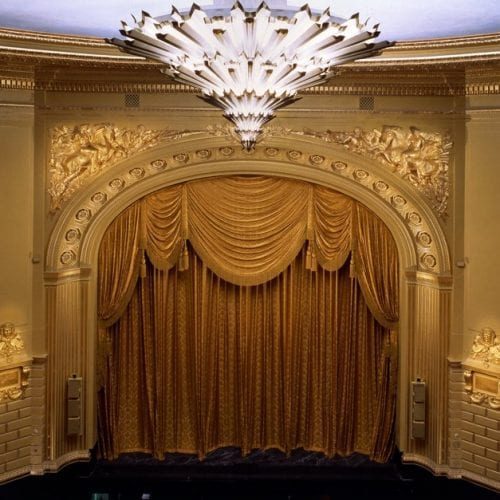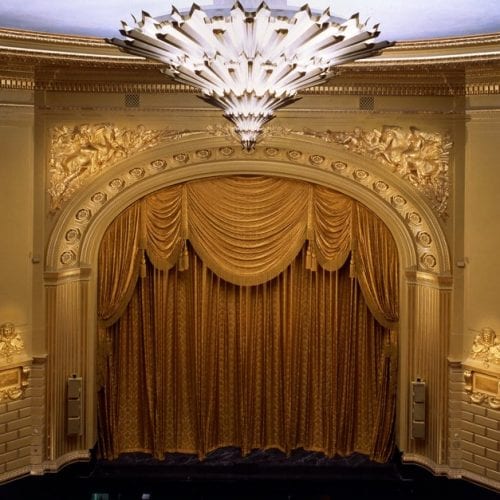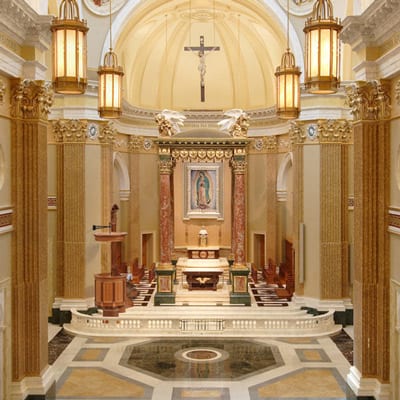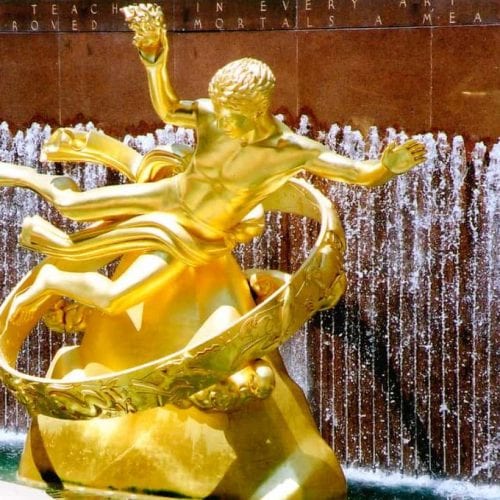Architectural & Exterior Gilding
Return your gilded structure to its original historic glory.
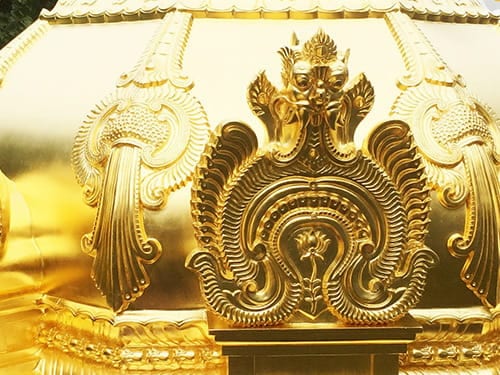 Throughout history and all across the world, metals like gold, silver, and other metal leaf varieties have been used to stunning effect in both exterior architecture and interior design. It is regularly found gleaming atop the domes of capitol buildings, statues, and other landmarks, and inspires solemnity and awe when incorporated into the paint, trim, furniture, and other decorative elements structures like capitol buildings, churches, theatres, and residences.
Throughout history and all across the world, metals like gold, silver, and other metal leaf varieties have been used to stunning effect in both exterior architecture and interior design. It is regularly found gleaming atop the domes of capitol buildings, statues, and other landmarks, and inspires solemnity and awe when incorporated into the paint, trim, furniture, and other decorative elements structures like capitol buildings, churches, theatres, and residences.
Unfortunately, as with other decorative elements, gilded items and structures can lose their luster over time. Improper handling, use, and cleaning can cause it to flake, peel, or become otherwise damaged. Changes to the underlying structure (for example, swelling plaster caused by water damage) can cause substantial damage as the metal leaf naturally shifts and adjusts itself to accommodate. Heavy rain, sleet, and snow can damage exterior gilding, as can items and debris carried by strong winds. Incompatible finishes, improper materials, and poor substrate preparation can reduce the lifespan of exterior gilding. Caretakers and groundskeepers seeking to stem damage may worsen it through amateur attempts. The list goes on.
At Canning, we have years of experience preserving, restoring, and recreating gilding on buildings of all types and styles. From the highest of domes to the interiors of iconic landmarks, churches, theatres, and residences, we’ve gilded them all—including the application and glazing of more than 90,000 square feet of gold, silver and copper leaf in ten weeks at Radio City Music Hall.
Testimonials
“Canning understands materials and specifications, especially traditional materials and techniques, and understands and appreciates the benefits of a truly collaborative effort in design excellence. [WV Capitol Dome]”
— ELIZABETH A. MOSS, LEED AP, ARCHITECTURAL CONSERVATOR, SWANKE HAYDEN CONNELL ARCHITECTS, NEW YORK CITY
“Canning has brought an outstanding common sense attitude of accomplishment to their work when many others are lost within myriad complex issues.”
— RUTHANN HUBBARD-KEMPER, EXECUTIVE DIRECTOR, PENNSYLVANIA CAPITOL PRESERVATION COMMITTEE, HARRISBURG, PENNSYLVANIA
Our Process
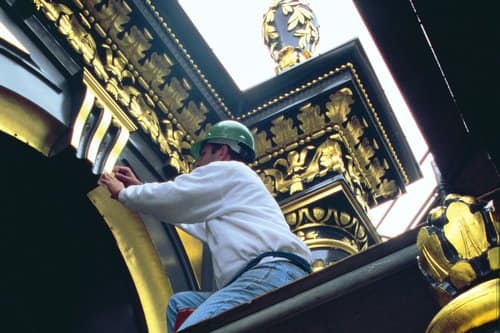

Before conducting any work, our first goal is to understand the history of the structure being worked on, including the role played by gilding in both original and current contexts. It is not uncommon for gilding restoration to be just one part of a project that also includes wood, stone, or plaster stabilization and restoration or other decorative work.
At the same time, we must understand the full scope of the project being pursued, including the budget and expectations and aspirations of the owner and key stakeholders. Owners may request value engineering such as using aluminum leaf and a glaze or Dutch metal rather than genuine gold leaf. Samples of the various metal leafs will be provided for comparison.
Once the project is fully understood, the underlying structure must be evaluated to determine whether or not there is any underlying damage or instabilities which may impact the gilded surface. If issues are identified, then actions will be taken to prevent future damage. Only then will work proceed with the application of metal leaf and glazing.
Cost Factors
The costs associated with a gilding project will depend on a number of factors. Some of these include:- The type of metal leaf to be used (whether gold, silver, or something else)
- The size, complexity, and scope of the project
- Required access (for example, whether the surface is located on a wall vs. a ceiling vs. an exterior surface like a dome)
- Whether the underlying structure must be repaired, stabilized, or restored
- Special materials costs
Our Specialties
In addition to architectural and exterior gilding, we specialize in a number of other complementary services, including:
- Historic Paint Analysis
- Conservation and Preservation
- Plaster Restoration and Stabilization
- Wood Restoration, Repair, and Replication
- Stone Restoration and Repair
- And more
SELECTED PROJECTS
We were able to uncovered original colors, patterns, and finishes to conserve 24 murals while restoring Stations of the Cross and the scagliola columns.
We carefully applied traditional gold-leaf gilding and glazes on 500,000 linear feet of historic architectural elements at the War Memorial Opera House.
Church Architect Duncan Stroik chose Canning to create the iconic interior decoration scheme to compliment the newly constructed Classical-style shrine
We applied over 180,000 square feet of metal leaf and glazes in order to properly restore the 1932 historical golden interior of the Radio City Music Hall.
The Our Lady of Elms Chapel project involved Canning to provide conservation and decorative painting along with some other services.
We restored the Prometheus Statue, a National Historic Landmark located in Rockefeller Center using gold leaf gilding.

